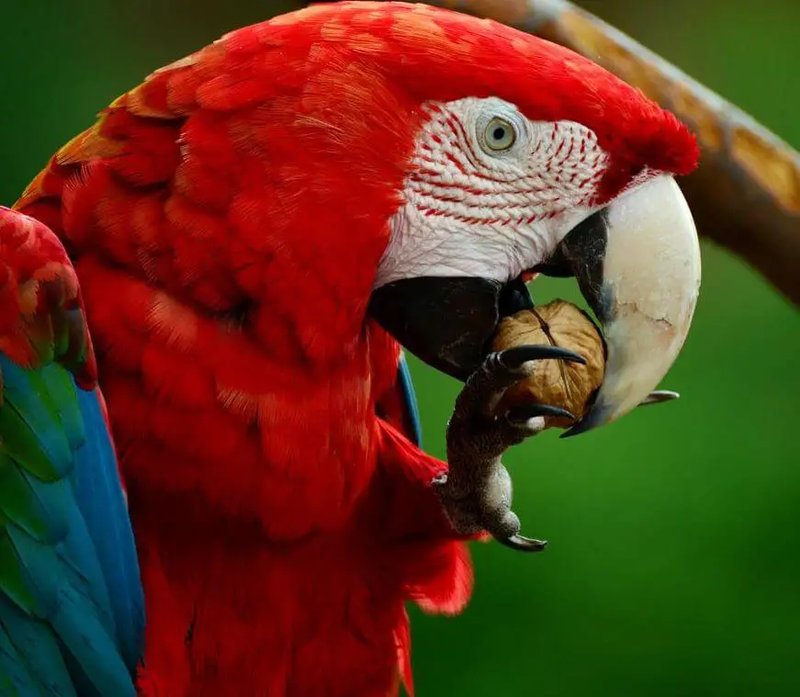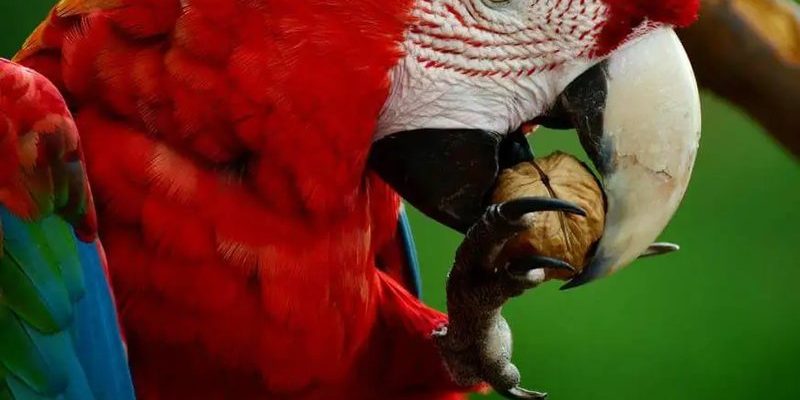
Imagine a macaw soaring through the rainforest, its vibrant plumage a flash of color against the green. As it glides gracefully, it’s not just enjoying the view; it’s scanning its surroundings for food. Macaws are known for their diverse diets, and their hunting strategies are just as colorful as they are. So, let’s explore how these remarkable birds find their meals and what they love to snack on!
The Natural Habitat of Macaws
First off, let’s talk about where macaws live. These beautiful birds primarily inhabit the tropical forests of Central and South America. Think of places like the Amazon Basin or the rainforests of Mexico. Their natural habitat is rich in biodiversity, filled with towering trees, lush undergrowth, and a variety of fruit-bearing plants. This environment provides the perfect backdrop for their foraging adventures.
Macaws are often found in pairs or small flocks, which helps them with finding food. It’s a bit like a team of friends going out for lunch together. When they spot a tasty treat, their collective knowledge and teamwork come into play, making it easier for them to locate and access their favorite foods. Communal living also enhances safety from predators. They can watch each other’s backs while snacking!
Favorite Foods of Macaws
So, what do macaws actually eat? Here’s the deal: these birds are primarily herbivores, with diets that mainly consist of fruits, nuts, seeds, and flowers. They particularly enjoy:
- Nuts: Macaws have powerful beaks, which allow them to crack open hard shells to access the tasty meats inside.
- Seeds: They love munching on seeds, especially those from palm trees.
- Fruits: Berries and tropical fruits are major favorites, providing essential nutrients and carbohydrates.
- Flowers: Occasionally, they’ll nibble on flowers, adding variety to their diet.
You might be wondering why their diet is so important. Well, it’s not just about keeping their bellies full. Eating a varied diet helps macaws meet their nutritional needs, ensuring they get the vitamins and minerals essential for their health. Plus, as they forage, they inadvertently help with seed dispersal, which keeps their environment thriving!
Foraging Techniques of Macaws
Alright, now that we know what they eat, let’s dive into how they find their food. Macaws are excellent foragers, and their methods are pretty fascinating. They primarily rely on their keen eyesight to spot food from high in the trees. You know how some people can spot a hidden item in a puzzle? Macaws are like expert puzzle solvers when it comes to finding snacks!
Once they identify a potential meal, they swoop down to investigate. Their strong legs and sharp claws allow them to perch securely on branches, making it easy to crack nuts or reach for fruits. Honestly, it’s impressive to watch them in action!
Additionally, they often take advantage of their social nature. When one macaw finds a food source, it can alert others. This teamwork can lead to a feast for the entire flock, making foraging a community event. Plus, they learn from each other, improving their foraging efficiency over time.
Hunting in Pairs: Cooperation in Food Gathering
You might picture a lone bird hunting for its dinner, but macaws often operate in pairs. This approach is particularly effective when they’re after larger food sources, like nuts from tall trees. By working together, they can reach higher branches or fend off competitors.
Imagine two macaws facing a tough nut: one uses its powerful beak to crack it open, while the other keeps an eye out for any potential threats. This cooperative strategy not only ensures they get their fill but also keeps them safe.
It’s pretty interesting how they communicate during foraging. They might use specific calls to signal when they’ve found something, creating a sort of food-sharing language. If you ever get a chance to observe them in the wild, you’ll really appreciate their teamwork!
The Role of Beaks in Diet and Hunting Strategies
One of the defining features of macaws is their beak. These beaks are not just for show; they play a crucial role in their diet and hunting strategies. With a beak designed for cracking tough shells, macaws can access foods that other birds might struggle with. It’s like having a built-in tool to help them in their culinary adventures!
Macaws also use their beaks to peel away the tough exterior of fruits, allowing them to reach the sweet, juicy flesh inside. Think of it as a chef skillfully preparing a dish. They’re experts at making sure they get to the best parts of their meals.
Additionally, their beaks are strong enough to intimidate would-be competitors or predators. The sight of a macaw with its robust beak can be enough to send other animals packing when it comes to food competition. It’s a nice little combo of strength and finesse!
Adaptations for Survival: Why Strategy Matters
Nature has a way of pushing animals to adapt, and macaws are no exception. Their diet and hunting strategies have evolved over time to help them thrive in their environments. For instance, knowing which foods are available in different seasons is crucial for their survival. They have to be flexible and adjust their foraging habits based on what’s in season.
This adaptability also influences their social structure. By forming flocks, macaws increase their chances of finding food and can share information about the best foraging spots. It’s like having a group of friends who always know the coolest restaurants in town!
Moreover, their vibrant colors serve a purpose in their hunting strategies. While they might be stunning to look at, their brilliant feathers can also help them blend into the canopy when they want to avoid predators. This camouflage is a clever way to stay safe while they focus on their next meal.
In the grand scheme of the rainforest, the diet and hunting strategies of macaws are a beautiful example of nature’s complexity. From their colorful plumage to their clever foraging methods, these birds are more than just eye candy; they are essential players in their ecosystems. Their ability to find food, work together, and adapt to their surroundings is a testament to their intelligence and resilience.
So next time you see a macaw, whether in person or on a nature documentary, remember that there’s a whole world of strategy and cooperation behind those vibrant feathers. Watching them thrive is like witnessing a masterclass in survival—a true dance of creativity and instinct! Let’s appreciate these remarkable creatures and the roles they play in our planet’s rich tapestry.

